Peeyush Kumar
OG-RAG: Ontology-Grounded Retrieval-Augmented Generation For Large Language Models
Dec 12, 2024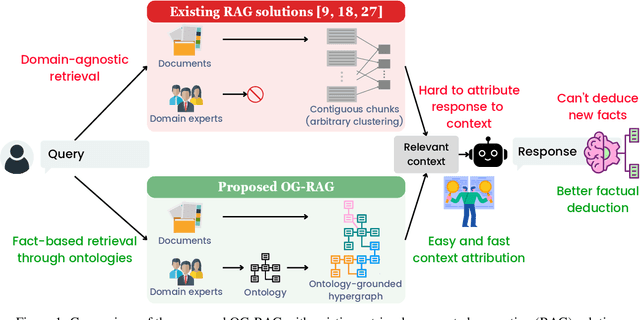


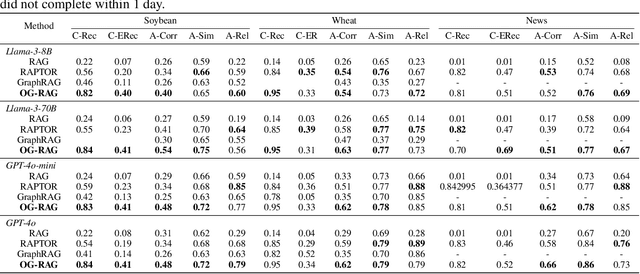
Abstract:This paper presents OG-RAG, an Ontology-Grounded Retrieval Augmented Generation method designed to enhance LLM-generated responses by anchoring retrieval processes in domain-specific ontologies. While LLMs are widely used for tasks like question answering and search, they struggle to adapt to specialized knowledge, such as industrial workflows or knowledge work, without expensive fine-tuning or sub-optimal retrieval methods. Existing retrieval-augmented models, such as RAG, offer improvements but fail to account for structured domain knowledge, leading to suboptimal context generation. Ontologies, which conceptually organize domain knowledge by defining entities and their interrelationships, offer a structured representation to address this gap. OG-RAG constructs a hypergraph representation of domain documents, where each hyperedge encapsulates clusters of factual knowledge grounded using domain-specific ontology. An optimization algorithm then retrieves the minimal set of hyperedges that constructs a precise, conceptually grounded context for the LLM. This method enables efficient retrieval while preserving the complex relationships between entities. OG-RAG applies to domains where fact-based reasoning is essential, particularly in tasks that require workflows or decision-making steps to follow predefined rules and procedures. These include industrial workflows in healthcare, legal, and agricultural sectors, as well as knowledge-driven tasks such as news journalism, investigative research, consulting and more. Our evaluations demonstrate that OG-RAG increases the recall of accurate facts by 55% and improves response correctness by 40% across four different LLMs. Additionally, OG-RAG enables 30% faster attribution of responses to context and boosts fact-based reasoning accuracy by 27% compared to baseline methods.
Economic Anthropology in the Era of Generative Artificial Intelligence
Oct 20, 2024Abstract:This paper explores the intersection of economic anthropology and generative artificial intelligence (GenAI). It examines how large language models (LLMs) can simulate human decision-making and the inductive biases present in AI research. The study introduces two AI models: C.A.L.L.O.N. (Conventionally Average Late Liberal ONtology) and M.A.U.S.S. (More Accurate Understanding of Society and its Symbols). The former is trained on standard data, while the latter is adapted with anthropological knowledge. The research highlights how anthropological training can enhance LLMs' ability to recognize diverse economic systems and concepts. The findings suggest that integrating economic anthropology with AI can provide a more pluralistic understanding of economics and improve the sustainability of non-market economic systems.
Zero-shot Microclimate Prediction with Deep Learning
Jan 05, 2024Abstract:Weather station data is a valuable resource for climate prediction, however, its reliability can be limited in remote locations. To compound the issue, making local predictions often relies on sensor data that may not be accessible for a new, previously unmonitored location. In response to these challenges, we propose a novel zero-shot learning approach designed to forecast various climate measurements at new and unmonitored locations. Our method surpasses conventional weather forecasting techniques in predicting microclimate variables by leveraging knowledge extracted from other geographic locations.
Privacy Preserving Multi-Agent Reinforcement Learning in Supply Chains
Dec 09, 2023



Abstract:This paper addresses privacy concerns in multi-agent reinforcement learning (MARL), specifically within the context of supply chains where individual strategic data must remain confidential. Organizations within the supply chain are modeled as agents, each seeking to optimize their own objectives while interacting with others. As each organization's strategy is contingent on neighboring strategies, maintaining privacy of state and action-related information is crucial. To tackle this challenge, we propose a game-theoretic, privacy-preserving mechanism, utilizing a secure multi-party computation (MPC) framework in MARL settings. Our major contribution is the successful implementation of a secure MPC framework, SecFloat on EzPC, to solve this problem. However, simply implementing policy gradient methods such as MADDPG operations using SecFloat, while conceptually feasible, would be programmatically intractable. To overcome this hurdle, we devise a novel approach that breaks down the forward and backward pass of the neural network into elementary operations compatible with SecFloat , creating efficient and secure versions of the MADDPG algorithm. Furthermore, we present a learning mechanism that carries out floating point operations in a privacy-preserving manner, an important feature for successful learning in MARL framework. Experiments reveal that there is on average 68.19% less supply chain wastage in 2 PC compared to no data share, while also giving on average 42.27% better average cumulative revenue for each player. This work paves the way for practical, privacy-preserving MARL, promising significant improvements in secure computation within supply chain contexts and broadly.
Reward Shaping via Diffusion Process in Reinforcement Learning
Jun 20, 2023
Abstract:Reinforcement Learning (RL) models have continually evolved to navigate the exploration - exploitation trade-off in uncertain Markov Decision Processes (MDPs). In this study, I leverage the principles of stochastic thermodynamics and system dynamics to explore reward shaping via diffusion processes. This provides an elegant framework as a way to think about exploration-exploitation trade-off. This article sheds light on relationships between information entropy, stochastic system dynamics, and their influences on entropy production. This exploration allows us to construct a dual-pronged framework that can be interpreted as either a maximum entropy program for deriving efficient policies or a modified cost optimization program accounting for informational costs and benefits. This work presents a novel perspective on the physical nature of information and its implications for online learning in MDPs, consequently providing a better understanding of information-oriented formulations in RL.
Multi-market Energy Optimization with Renewables via Reinforcement Learning
Jun 13, 2023Abstract:This paper introduces a deep reinforcement learning (RL) framework for optimizing the operations of power plants pairing renewable energy with storage. The objective is to maximize revenue from energy markets while minimizing storage degradation costs and renewable curtailment. The framework handles complexities such as time coupling by storage devices, uncertainty in renewable generation and energy prices, and non-linear storage models. The study treats the problem as a hierarchical Markov Decision Process (MDP) and uses component-level simulators for storage. It utilizes RL to incorporate complex storage models, overcoming restrictions of optimization-based methods that require convex and differentiable component models. A significant aspect of this approach is ensuring policy actions respect system constraints, achieved via a novel method of projecting potentially infeasible actions onto a safe state-action set. The paper demonstrates the efficacy of this approach through extensive experiments using data from US and Indian electricity markets, comparing the learned RL policies with a baseline control policy and a retrospective optimal control policy. It validates the adaptability of the learning framework with various storage models and shows the effectiveness of RL in a complex energy optimization setting, in the context of multi-market bidding, probabilistic forecasts, and accurate storage component models.
Affordable Artificial Intelligence -- Augmenting Farmer Knowledge with AI
Mar 04, 2023Abstract:Farms produce hundreds of thousands of data points on the ground daily. Farming technique which combines farming practices with the insights uncovered in these data points using AI technology is called precision farming. Precision farming technology augments and extends farmers' deep knowledge about their land, making production more sustainable and profitable. As part of the larger effort at Microsoft for empowering agricultural labor force to be more productive and sustainable, this paper presents the AI technology for predicting micro-climate conditions on the farm. This article is a chapter in publication by Food and Agriculture Organization of the United Nations and International Telecommunication Union Bangkok, 2021. This publication on artificial intelligence (AI) for agriculture is the fifth in the E-agriculture in Action series, launched in 2016 and jointly produced by FAO and ITU. It aims to raise awareness about existing AI applications in agriculture and to inspire stakeholders to develop and replicate the new ones. Improvement of capacity and tools for capturing and processing data and substantial advances in the field of machine learning open new horizons for data-driven solutions that can support decision-making, facilitate supervision and monitoring, improve the timeliness and effectiveness of safety measures (e.g. use of pesticides), and support automation of many resource-consuming tasks in agriculture. This publication presents the reader with a collection of informative applications highlighting various ways AI is used in agriculture and offering valuable insights on the implementation process, success factors, and lessons learnt.
General sum stochastic games with networked information flows
May 05, 2022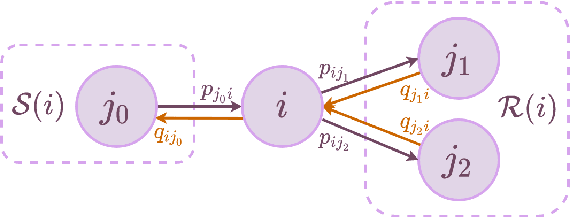



Abstract:Inspired by applications such as supply chain management, epidemics, and social networks, we formulate a stochastic game model that addresses three key features common across these domains: 1) network-structured player interactions, 2) pair-wise mixed cooperation and competition among players, and 3) limited global information toward individual decision-making. In combination, these features pose significant challenges for black box approaches taken by deep learning-based multi-agent reinforcement learning (MARL) algorithms and deserve more detailed analysis. We formulate a networked stochastic game with pair-wise general sum objectives and asymmetrical information structure, and empirically explore the effects of information availability on the outcomes of different MARL paradigms such as individual learning and centralized learning decentralized execution.
Complete Scanning Application Using OpenCv
Jul 08, 2021Abstract:In the following paper, we have combined the various basic functionalities provided by the NumPy library and OpenCv library, which is an open source for Computer Vision applications, like conversion of colored images to grayscale, calculating threshold, finding contours and using those contour points to take perspective transform of the image inputted by the user, using Python version 3.7. Additional features include cropping, rotating and saving as well. All these functions and features, when implemented step by step, results in a complete scanning application. The applied procedure involves the following steps: Finding contours, applying Perspective transform and brightening the image, Adaptive Thresholding and applying filters for noise cancellation, and Rotation features and perspective transform for a special cropping algorithm. The described technique is implemented on various samples.
Neural Computing
Jul 06, 2021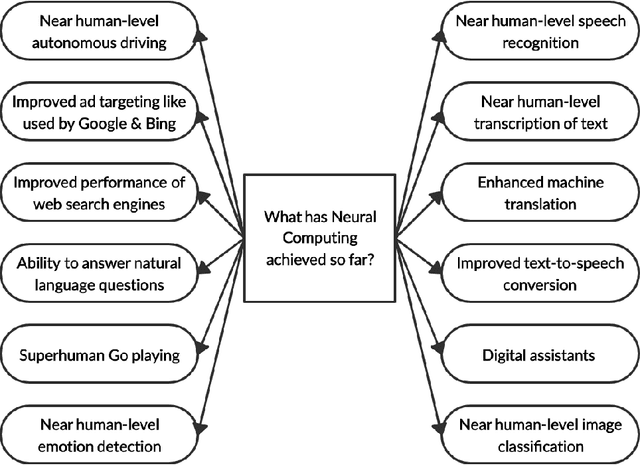
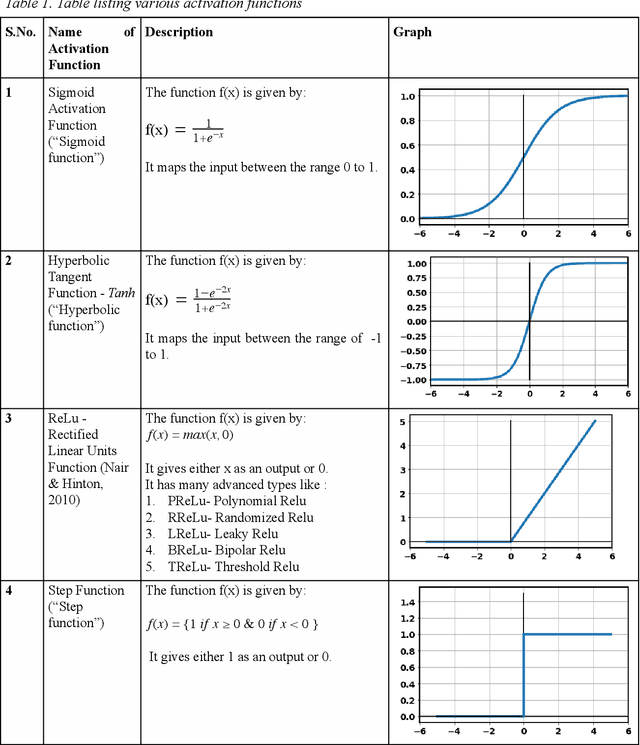
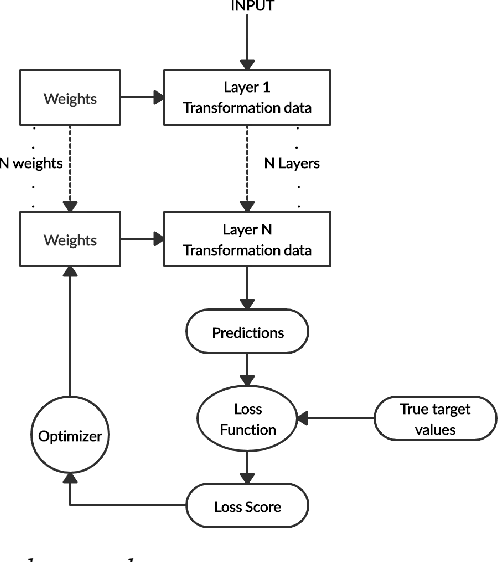
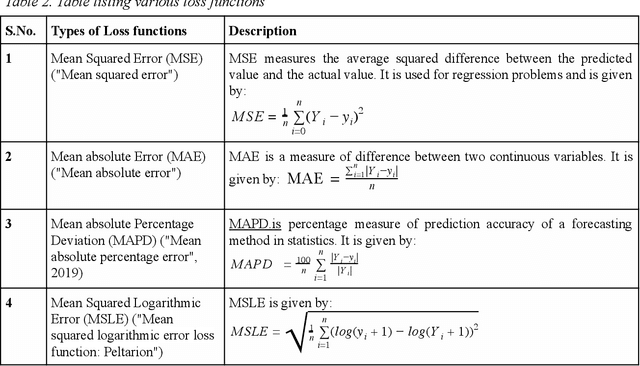
Abstract:This chapter aims to provide next-level understanding of the problems of the world and the solutions available to those problems, which lie very well within the domain of neural computing, and at the same time are intelligent in their approach, to invoke a sense of innovation among the educationalists, researchers, academic professionals, students and people concerned, by highlighting the work done by major researchers and innovators in this field and thus, encouraging the readers to develop newer and more advanced techniques for the same. By means of this chapter, the societal problems are discussed and various solutions are also given by means of the theories presented and researches done so far. Different types of neural networks discovered so far and applications of some of those neural networks are focused on, apart from their theoretical understanding, the working and core concepts involved in the applications.
 Add to Chrome
Add to Chrome Add to Firefox
Add to Firefox Add to Edge
Add to Edge